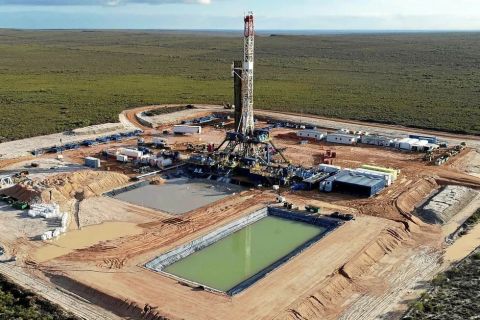A U.S. appeals court on April 23 denied Dakota Access LLC’s petition for a rehearing of a court decision that canceled a key permit for its oil pipeline and ordered an environmental review, court documents show.
The decision by the U.S. Court of Appeals for the District of Columbia means the Dakota Access Pipeline (DAPL) technically is still trespassing on federal land because it does not have a permit to cross under the Dakotas’ Lake Oahe. The line is currently operating indefinitely but will be reassessed once the environmental review of the line is completed in March 2022.
The 570,000 bbl/d DAPL began operating in mid-2017 but drew controversy during construction as Native American tribes and activists protested its route under Oahe, a critical drinking water source for the tribes.
RELATED:
US Army Corps to Allow Dakota Access Pipeline to Stay Open During Review
Last summer, a U.S. district court judge threw out a federal permit for the line to operate under the lake and ordered an environmental review for that section of the pipeline. A three-judge panel at the circuit court in January upheld the lower court’s decision to vacate the permit and require the review.
The pipeline’s operators wanted the circuit court to reconsider the panel’s decision, but the court unanimously denied the request. The decision leaves only the U.S. Supreme Court for Dakota Access to oppose the environmental review and permit denial, but it's not certain the nation's highest court will take up the case.
“This is a pretty definitive statement that the legal issues, in this case, do not warrant attention from the Supreme Court,” said Earthjustice attorney Jan Hasselman, who represents the Standing Rock Sioux in the case. “Here, not only didn't we see dissents, not a single judge called for a vote.”
A spokeswoman for Energy Transfer LP, DAPL’s majority owner, declined to comment on current or pending legal matters.
DAPL is the largest pipeline out of the Bakken region, which produces about 1 million bbl/d of crude in North Dakota and Montana. If the pipeline were forced to close, the state of North Dakota estimates production could fall by 400,000 bbl/d temporarily.
Once the U.S. Army Corps of Engineers completes its environmental review, a decision will be made on whether to issue a new permit for the pipeline.
Recommended Reading
Brett: Oil M&A Outlook is Strong, Even With Bifurcation in Valuations
2024-04-18 - Valuations across major basins are experiencing a very divergent bifurcation as value rushes back toward high-quality undeveloped properties.
Marketed: BKV Chelsea 214 Well Package in Marcellus Shale
2024-04-18 - BKV Chelsea has retained EnergyNet for the sale of a 214 non-operated well package in Bradford, Lycoming, Sullivan, Susquehanna, Tioga and Wyoming counties, Pennsylvania.
Triangle Energy, JV Set to Drill in North Perth Basin
2024-04-18 - The Booth-1 prospect is planned to be the first well in the joint venture’s —Triangle Energy, Strike Energy and New Zealand Oil and Gas — upcoming drilling campaign.
PGS, TGS Merger Clears Norwegian Authorities, UK Still Reviewing
2024-04-17 - Energy data companies PGS and TGS said their merger has received approval by Norwegian authorities and remains under review by the U.K. Competition Market Authority.
Energy Systems Group, PacificWest Solutions to Merge
2024-04-17 - Energy Systems Group and PacificWest Solutions are expanding their infrastructure and energy services offerings with the merger of the two companies.




